As a foreigner living in China, it is sometimes nice to see familiar brands when you are feeling homesick. Some of these brands have become integral to the lives of Chinese people, some of them are new. Below I have listed some of the most commonly seen Western brands in China and how they are written in Chinese.
麦当劳 (mài dāng láo) = McDonald’s
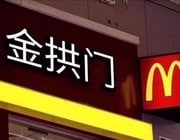
McDonald’s has the phonetic name, 麦当劳 (mài dāng láo). However, in an attempt to increase sales the McDonald’s comany name was changed to 金拱门 (jīn gǒng mén) meaning the ‘Golden Arches’. It seems like you can find people everywhere who like McDonald’s and this is also true in China. The menu is contextualized, with more chicken sandwiches than beef ones and local specialties like milk tea.
金 (jīn) = gold
拱 (gǒng) = arch
门 (mén) = door
沃尔玛 (wò ěr mǎ) = Wal-Mart
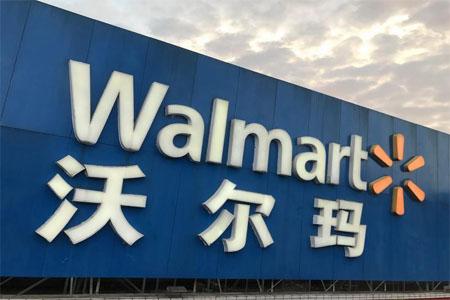
Stepping into a Wal-Mart can be a refreshing experience after spending a lot of time in other Chinese retail stores. Any previous qualms I had about shopping at Wal-Mart have been crushed by the fact that they are often the only store where I can find what I actually want. 沃尔玛 is also a phonetic name:
沃(wò) = fertile / rich
尔 (ěr) = thus / so / like that / you / thou
玛(mǎ) = agate / cornelian
星巴克 (xīng bā kè) = Starbucks
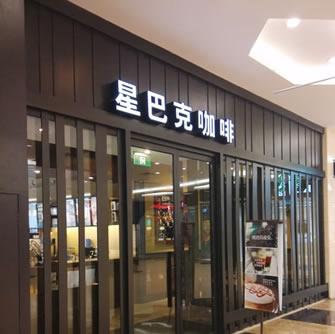
While China is not traditionally a coffee-drinking country, young Chinese urbanites have grown an interest in cafes like Starbucks. The drinks are roughly the same price as in the States, which makes them very expensive by Chinese standards. Starbucks is somewhat contextualized with its Starbucks moon cakes and localized mugs. 星巴克 is also a phonetic spelling.
星 (xīng) = star / satellite
巴 (bā) = to long for / to wish / to cling to
克 (kè) = to be able to / to subdue
肯德基 (kěn dé jī ) = KFC
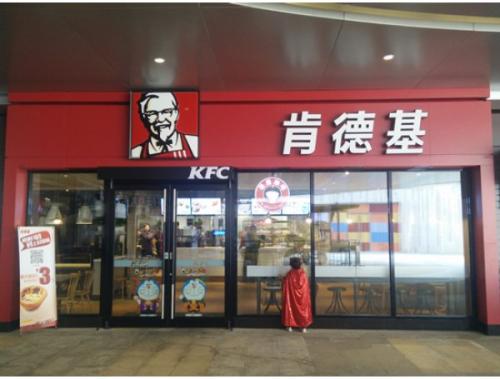
Many Chinese people love KFC. While it seems to be dwindling in other places around the world, the chain is practically everywhere here. Like McDonald’s, KFC also has a phonetic spelling.
肯(kěn) = to agree / to consent
德(dé) = virtue / goodness / morality
基(jī) = base / foundation
H&M
H&M has no Chinese name, probably because “H” and “M” are easy to read. It is fairly affordable compared to other clothing in China. It is especially good for Western women who struggle to find their size in Chinese shops.
家乐福 (jiā lè fú) = Carrefour
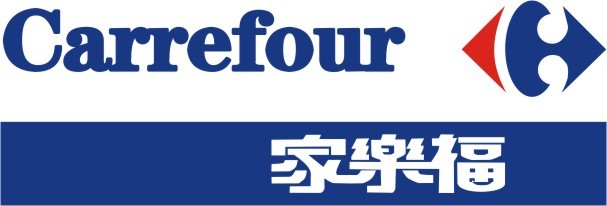
This French grocery store chain, like Wal-Mart, is very well organized and they also sell a good number of imported products, like alcohol and cake mix. The name is also phonetic.
家 (jiā ) = home / family
乐 (lè) = happy / laugh
福 (fú) = good fortune / happiness / luck
汉堡王 (hàn bǎo wáng ) = Burger King
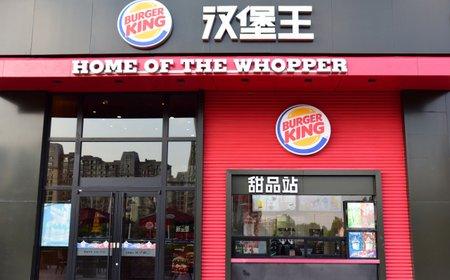
Burger King in China, unlike McDonald’s, still sells more beef sandwiches than chicken sandwiches. 汉堡王 is partly phonetic, partly not. 汉堡 (hàn bǎo) is phonetic for “hamburger” and 王 (wáng) means “king.”
苹果公司 (píng guǒ gōng sī) = Apple Inc.
Chinese people go crazy for Apple products. These are relatively expensive, but more and more Chinese people are able to afford them. 苹果 (píng guǒ) is not phonetic, but merely means “apple.”
必胜客 (bì shèng kè) = Pizza Hut
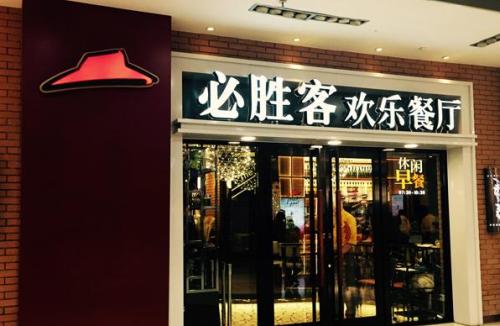
Many Americans who visit Pizza Hut in China are surprised when they discover that the menu is quite different than Pizza Hut in the States. The pizza is far less greasy and the restaurant also serves pastas, appetizers, and more. I have seen long lines of Chinese people waiting for a table at Pizza Hut. 必胜客 is also phonetic.
必 (bì ) = certainly / must
胜 (shèng) = victory / success
客 (kè) = customer / visitor
可口可乐 (kě kǒu kě lè) = Coca-Cola

Coke is available EVERYWHERE in China, although the taste is a little different from in the West, it’s popular with Chinese people and foreigners alike.
The Chinese is an amusing phonetic take on the Coca-Cola brand and easy characters to remember if you’re in a need of a carbonated beverage!
可 (kě) = can / may
口 (kǒu) – mouth
可 (kě) = can / may
了 (lè) – happy / cheerful
Addition: 可口 (kě kǒu) also means delicious and 可乐 (kě lè) means pleasant or entertaining.
Thanks to Ingo for the extra info 🙂
美宝莲 (měi bǎo lián) = Maybelline
Maybelline has become a popular brand of makeup in China, especially it’s mascaras and nail polish.
The Chinese is a phonetic translation, but each character has an apt meaning:
美 (měi) = the Americas / beautiful
宝 (bǎo) – jewel / gem / treasure / precious
连 (lián) – lotus
兰蔻 (lán kòu) = Lancôme
This French cosmetic brand is sought after in China. One thing that Chinese women are prepared to pay for are cosmetics and beauty products. The characters are purely a phonetic translation of the Lancôme brand:
兰 (lán) = orchid / lily magnolia
蔻 (kòu) = related to ‘nutmeg’
咖世家咖啡 (kā shì jiā kā fēi) = Costa Coffee
British coffee chain Costa Coffee is popping up around China and is becoming a popular alternative to 星巴克. The Chinese name is a mixture of phonetic and brand translation:
咖 (kā) = coffee / class / grade
世家 (shì jiā) = family influential for generations / aristocratic family
咖啡 (kā fēi) = coffee (loanword)
欧舒丹(ōu shū dān) = L’occitane
Earlier in 2015, the world-famous French skincare brand planned to open 9 new stores in China and are quickly becoming more and more well known, even creating their own Tmall.com 天猫 store.
欧 (ōu) = Europe
舒 (shū) = to stretch / to unfold / to relax / leisurely
丹 (dān) = red / pellet / powder / cinnabar
